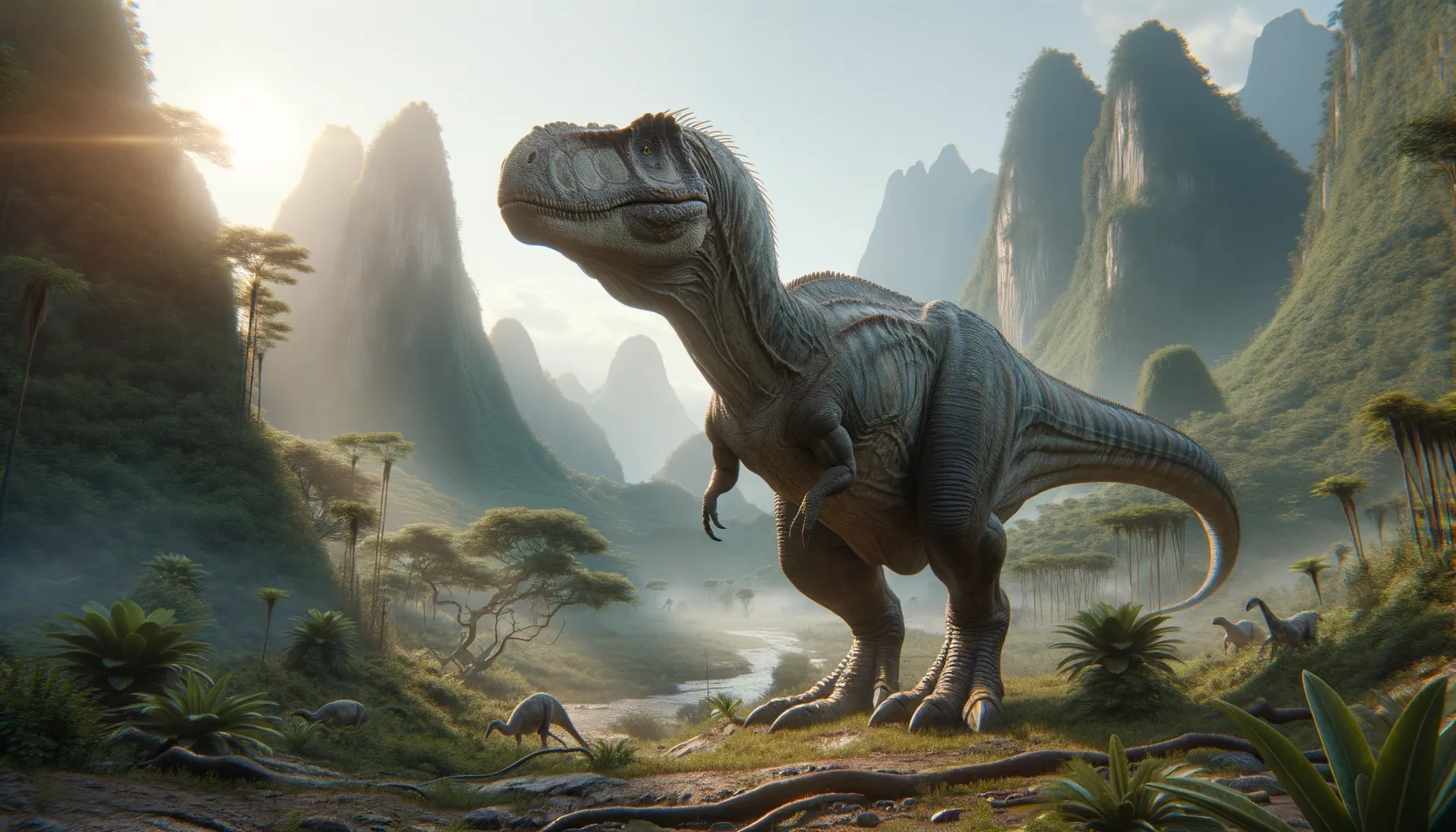
Lancanjiangosaurus
A gentle giant of the Jurassic era.
Period
Jurassic
Length
Measured approximately 7 meters long.
Height
Stood roughly 2.5 meters tall.
Weight
Estimated to weigh around 1 to 2 tonnes.
Lancanjiangosaurus was a herbivorous dinosaur from the Late Jurassic period. It roamed the ancient landscapes of what is now China, characterized by its stout body and relatively slow gait. This dinosaur was part of a group known as stegosaurs, which had distinctive plates along their backs. Despite its potentially intimidating appearance, it mainly fed on plants and lived in herds for protection.
Diet
Lancanjiangosaurus was a herbivore, meaning it fed on plants. It likely grazed on low-lying vegetation, using its beak to pluck leaves and branches. Its diet consisted mainly of ferns, cycads, and other available prehistoric flora.
Hunting
As a herbivore, Lancanjiangosaurus did not hunt other animals. Instead, it foraged for food in densely vegetated areas. It relied on its size and herd movements for defense rather than hunting.
Environmental challenges
Lancanjiangosaurus faced challenges such as predators, which included large theropods of its time. One of its major concerns was finding sufficient food, as droughts or overbrowsing could reduce available resources. The shifting climates and landscapes also meant it had to adapt to changes in its habitat. These challenges influenced its migratory habits and social structures.
Speed
Likely a slow mover due to its size.
Lifespan
Probably lived for about 20 to 30 years.
First discovery
Discovered in China in the early 21st century.
Fun Facts
- Lancangjiangosaurus was a herbivorous dinosaur that lived during the Jurassic period.
- Its name means 'Lancang River lizard,' named after the region where it was discovered in China.
- Fossils of Lancangjiangosaurus were first described in 2007, making it a relatively recent addition to the list of known dinosaurs.
- This dinosaur is known from only a few fossil fragments, so much about its appearance and lifestyle remains a mystery.
- Lancangjiangosaurus belonged to the sauropod group, known for their long necks and massive bodies.
- Despite its large size, it likely fed on plants, using its long neck to reach vegetation high in trees.
- The discovery of Lancangjiangosaurus helps scientists understand the diversity of dinosaurs in the Jurassic period.
Growth and Development
Juvenile Lancanjiangosaurus likely grew rapidly to reach a size that offered protection from predators. The growth rates might have slowed as they matured, allowing for the development of robust skeletal structures. They hatched from eggs, with the young receiving some parental care initially. Maturity likely brought changes in herd roles, possibly moving from central protective groups to more peripheral positions.
Habitat
Lancanjiangosaurus lived in a lush, forested environment with plenty of vegetation. The climate was warm, with varying wet and dry seasons influencing the availability of food. The abundance of plant life provided ample sustenance for its herd. These dinosaurs thrived in areas with water sources, such as rivers or lakes, which supported rich plant growth and offered drinking water.
Interaction with other species
Lancanjiangosaurus coexisted with several other dinosaur species, both herbivorous and carnivorous. It likely maintained a distance from predators but might have engaged in herd defense strategies if threatened. Smaller herbivores shared the same habitats, and competition for resources like food and territory may have been common. Its herds possibly included social hierarchies, influencing interactions with other groups.
Natural lifespan
Lancanjiangosaurus is believed to have lived for 20 to 30 years naturally.
Reproduction
Lancanjiangosaurus was an egg-layer, with females depositing clutches in nests. These nests were likely semi-concealed to protect them from predators. After hatching, juveniles may have remained in or near the nest for some time, receiving care from adults. Reproductive behaviors possibly included courtship displays involving visual cues or sounds to attract potential mates.
Social behaviour
It lived in herds, which provided protection and social structure. Group living allowed for coordinated defense against predators, using their combined size to deter attacks. Within these groups, there may have been hierarchy based on size or age. Social behaviors could have included communication through visual signals or body language.
Fossil locations
Fossils of Lancanjiangosaurus have primarily been found in China. These discoveries contribute to understanding the diversity of stegosaurs in Asia. The specific sites are rich in Late Jurassic deposits, offering insights into the ancient ecosystems. Excavations in these areas continue to reveal new information about this dinosaur's life and environment.
